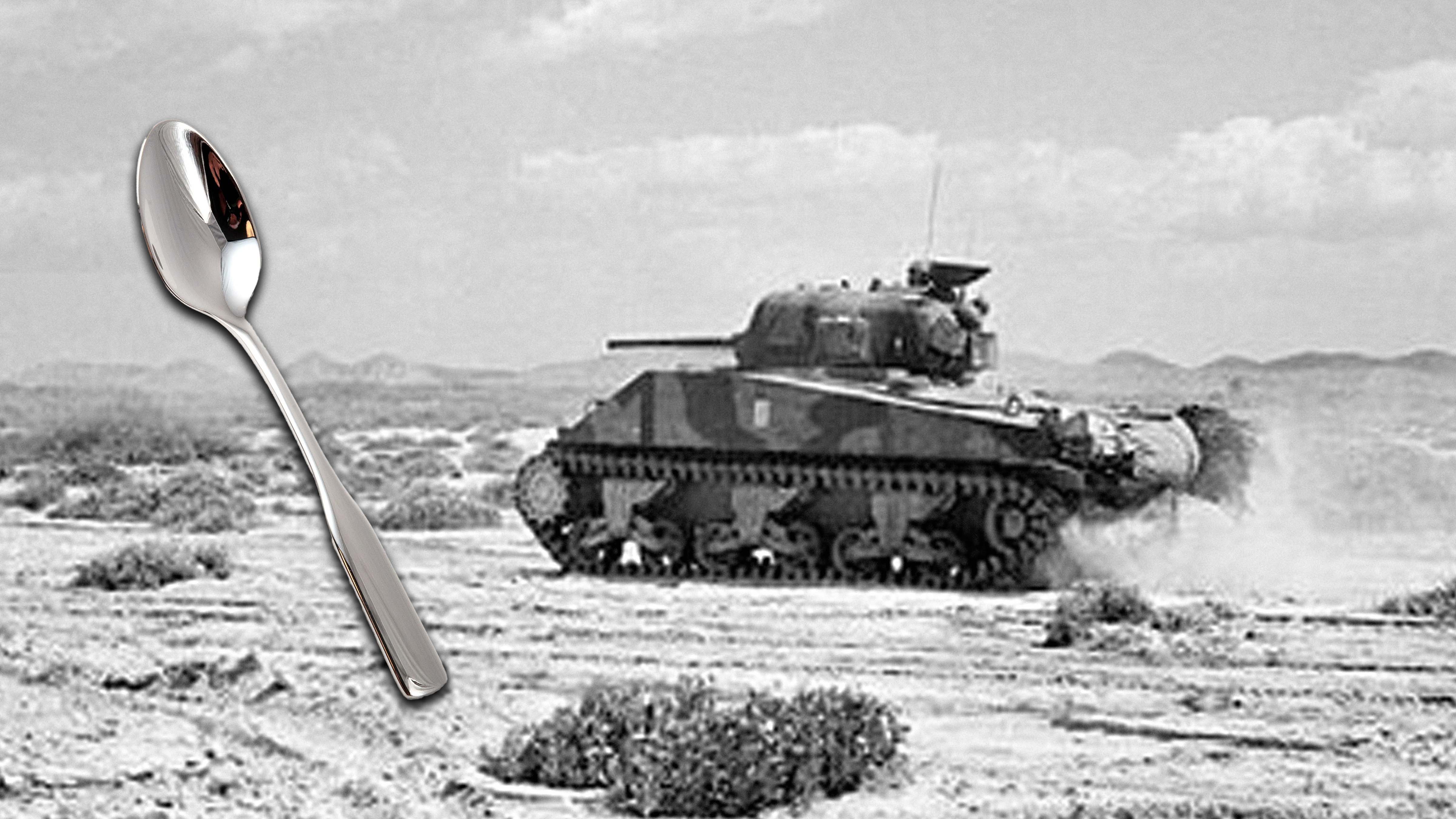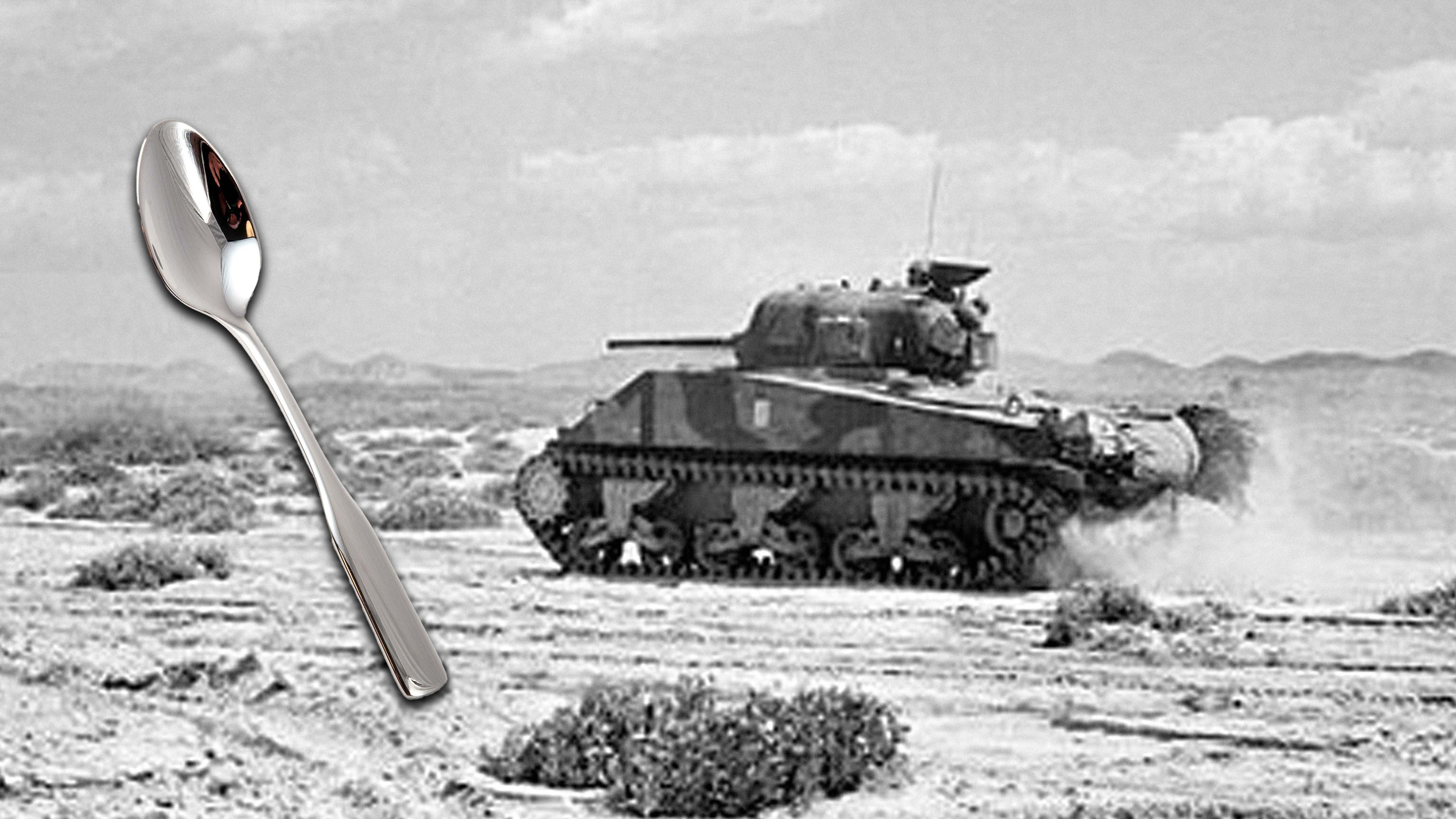

Nearly all soldiers carry a spoon in their kit, but it’s hard to imagine it could be useful in combat. But in 1943, Army 1st Lt. Dwight “Steve” Varner used a teaspoon to bamboozle German and Italian soldiers into surrendering during fierce fighting in Africa.
On May 5, 1943, Varner was a company commander in the 1st Armored Division, and attacked heavily defended German and Italian positions in northern Tunisia.
According to retired Air Force Col. Douglas Sterner, an historian of U.S. military valor awards, Varner’s M3 Lee medium tank, nick-named Fighting Illini II, was hit four times but still maneuvered to within 75 yards of German 10th Panzer Division positions. A fifth shot, this one an armor-piercing shell, punched through Varner’s tank disabling the engine and draft shaft, and wounding the driver, Sgt. Fred Russell.
“We had been hit four times before but hadn’t been stopped. I talked to the driver, who told me the engine was locked. The driver stood up to see where the fire was coming from, and they riddled him with machine gun bullets,” Varner recalled in Sterner’s book “Beyond Belief: True Stories of American Heroes that Deny Comprehension.”
Varner’s loader, Pvt. Joseph Zupancic, armed the tank’s .30-06 Browning M1919A4 machine guns and returned fire until all ammunition was exhausted — for which he was awarded the Distinguished Service Cross. By that time, Varner had regained consciousness and immediately moved, with Zupancic, to evacuate Russell.
They drug their wounded driver 40 yards away from their tank, which had become the prime target. Despite enemy heavy artillery and gunfire, the two able-bodied tankers dug a slit trench to better cover Russell as they tended to his wounds.
Russell had been shot 13 times by machine gun rounds. He lost an eye, and the use of his left leg and left arm. Varner was wounded by a gunshot to the chest, suffered shrapnel wounds on the back of his hand and elbow, and a burn on his arm. As they tended to Russel, four Germans approached from the rear and took them all prisoner.
They were thrown into a group of 50 prisoners and forced to march 40 miles. But after two days, Varner and Zupancic escaped, hiding in a wheat field even as enemy soldiers came as close as 20 yards. They continued heading towards friendly units, cutting enemy communication lines as they went.
Varner was not armed, or by definition, was not — he just had a teaspoon.
According to Varner’s Distinguished Service Cross citation, as the duo climbed up a steep hill, they came face-to-face with “several Italians.” He grabbed hold of the teaspoon in his pocket, pushed it forward to imitate the look of a pistol barrel, and told the Italians to surrender, allowing the duo to escape.
Varner used his teaspoon ruse a second time when they came across a truck with eight Italians, this time taking the whole group as prisoners. Further down the road, Varner used the teaspoon a third time, this time capturing another truck and 17 Germans.
Varner and Zupancic used the two captured vehicles to drive themselves and their 24 POWs unchallenged through enemy lines, reaching the troops of the British Eighth Army, where they handed over their POWs and rejoined their unit.
Not long after, hundreds of Italians surrendered to Varner and his small tank unit during the heavy fighting in the campaign’s final days. Varner made sure to move the surrendering Italians to cover, keeping them as safe as possible. The military attaché office of the Italian Consulate in Washington, D.C., later presented Varner with the Italian government’s Medal of Valor on Feb. 20, 2006, for his actions that day.
